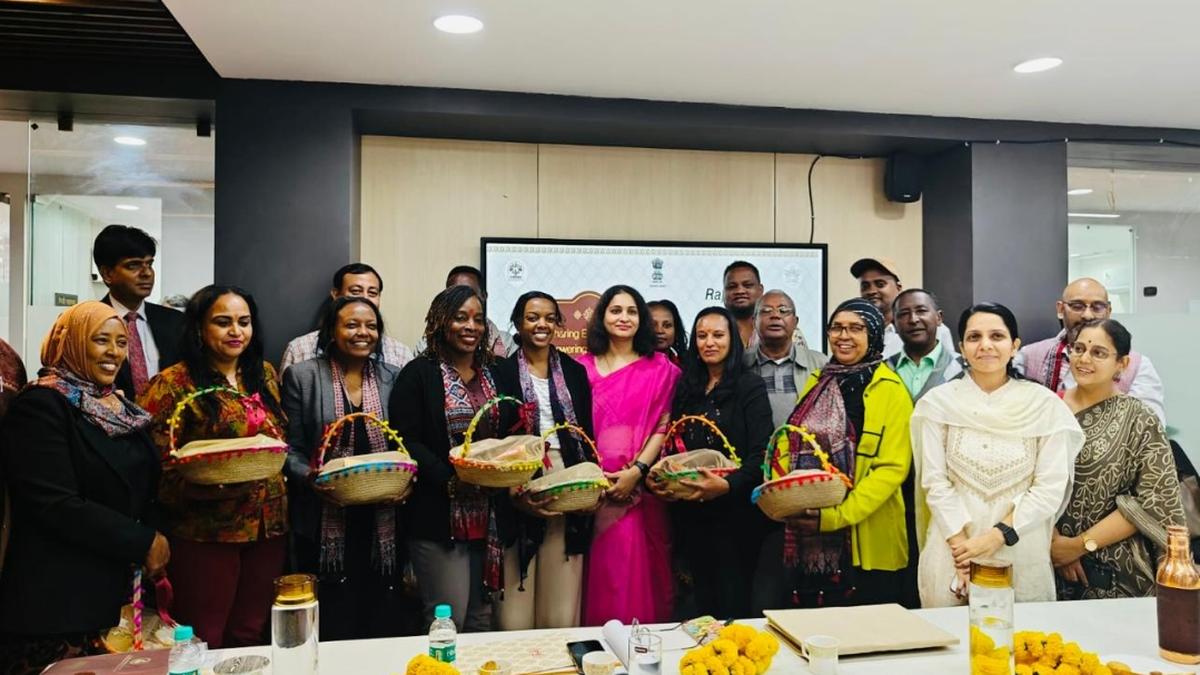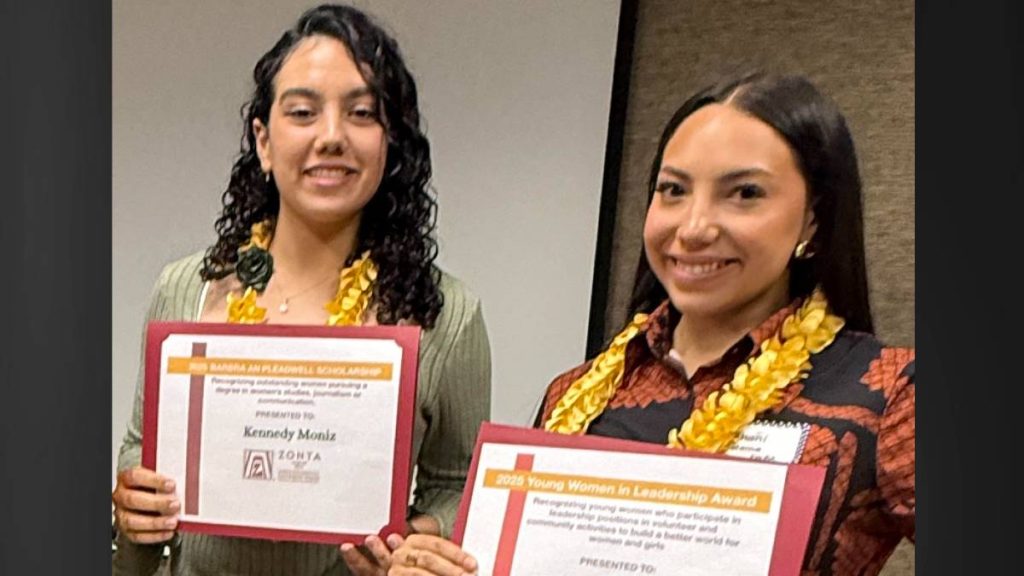Ethiopian delegation visits Rajasthan to study rural livelihood initiatives – The Hindu

Report on Ethiopian Delegation’s Study of Rural Livelihood Initiatives in Rajasthan
1.0 Introduction and Objectives of the Visit
A 25-member international delegation visited Rajasthan to study community-based initiatives aligned with several Sustainable Development Goals (SDGs), particularly those focused on poverty, gender equality, and economic growth. The two-day visit was centered on understanding the structure, implementation, and outcomes of the National Rural Livelihoods Mission (NRLM) as facilitated by the Rajasthan Grameen Ajeevika Vikas Parishad.
- Delegation Composition:
- 15 members from the Ethiopian government
- 3 members from the World Bank
- 7 members from Micro Save Consulting
- 4 officials from the National Rural Livelihoods Mission (NRLM)
- Primary Objective: To gain insights into a successful model for rural development that directly contributes to achieving SDG 1 (No Poverty), SDG 5 (Gender Equality), and SDG 8 (Decent Work and Economic Growth) through women’s empowerment and sustainable livelihood programmes.
2.0 Field Observations in Alwar District
The delegation conducted a field visit in Alwar district to interact directly with beneficiaries and observe the operational framework of the community-based institutions. The observations provided a practical understanding of how the programme advances key SDGs at the grassroots level.
2.1 Key Activities and Alignment with SDGs
- Interaction with Women-Led Community Institutions: The delegation engaged with members of Self-Help Groups (SHGs), village organisations, and cluster-level federations. This highlighted the programme’s success in promoting SDG 5 (Gender Equality) by fostering women’s leadership and decision-making roles within their communities.
- Analysis of Financial Mechanisms: The processes of SHG formation and inter-loaning mechanisms were studied. These systems provide access to credit and promote financial independence, directly supporting SDG 1 (No Poverty) and SDG 10 (Reduced Inequalities) by building economic resilience among rural women.
- Review of Economic Activities: The delegation observed income-generating activities undertaken by producer groups and enterprises. These initiatives are crucial for creating sustainable livelihoods and promoting local economic development, which is central to SDG 8 (Decent Work and Economic Growth).
The Ethiopian officials praised the community-driven model for its effectiveness in achieving the socio-economic empowerment of women, a cornerstone of SDG 5.
3.0 Institutional Briefings and Strategic Insights
Following the field visit, the delegation met with the State Project Management Unit of Ajeevika Vikas Parishad in Jaipur for high-level discussions on the programme’s strategic framework.
3.1 Core Discussion Points
- Programme Convergence: State Mission Director Neha Giri detailed the convergence between various government schemes and community institutions. This integrated approach exemplifies SDG 17 (Partnerships for the Goals) by leveraging multi-sectoral collaboration for inclusive development.
- Financial Inclusion: Officials from participating banks presented on the credit linkages and financial mechanisms extended to SHGs. These efforts to enhance financial inclusion in rural areas are critical for achieving SDG 1 (No Poverty) and SDG 10 (Reduced Inequalities).
- Community Mobilisation: Discussions offered valuable insights into Rajasthan’s model for community mobilisation and women-led enterprise development, reinforcing the programme’s impact on SDG 5 and SDG 8.
4.0 Conclusion
The study visit concluded that the rural livelihood initiatives in Rajasthan provide a robust and replicable model for achieving multiple Sustainable Development Goals. The programme’s emphasis on a community-driven, women-centric approach demonstrates a powerful strategy for fostering inclusive and sustainable development.
Analysis of Sustainable Development Goals (SDGs) in the Article
1. Which SDGs are addressed or connected to the issues highlighted in the article?
The article highlights several issues that are directly connected to the following Sustainable Development Goals (SDGs):
- SDG 1: No Poverty: The core focus of the article is on “community-based livelihood” initiatives and programmes aimed at alleviating poverty in rural areas through economic empowerment. The National Rural Livelihoods Mission (NRLM) and the Rajasthan Grameen Ajeevika Vikas Parishad model are designed to create sustainable income sources for the rural poor.
- SDG 5: Gender Equality: The article repeatedly emphasizes “women’s empowerment initiatives.” It notes that the self-help groups (SHGs), village organisations, and cluster-level federations are “managed by women.” The praise for the “leadership demonstrated by women members of SHGs” and the focus on “women-led enterprise development” directly link the initiatives to achieving gender equality and empowering women.
- SDG 8: Decent Work and Economic Growth: The initiatives described, such as “income generating activities undertaken through producer groups and producer enterprises,” are aimed at promoting sustained, inclusive, and sustainable economic growth. By fostering entrepreneurship at the grassroots level, these programmes contribute to creating decent work and improving economic productivity.
- SDG 17: Partnerships for the Goals: The entire context of the article revolves around a partnership. The visit of the “25-member delegation from Ethiopia,” which included government officials, representatives from the “World Bank,” and consultants, to learn from India’s “National Rural Livelihoods Mission (NRLM)” is a clear example of international cooperation and knowledge sharing to achieve sustainable development.
2. What specific targets under those SDGs can be identified based on the article’s content?
Based on the activities and goals described in the article, the following specific SDG targets can be identified:
- Target 1.4: By 2030, ensure that all men and women, in particular the poor and the vulnerable, have equal rights to economic resources, as well as access to basic services… and financial services, including microfinance.
- Explanation: The article discusses “inter-loaning mechanisms,” “credit linkages,” and “financial mechanisms extended to SHGs.” Senior bankers also highlighted “attempts to enhance financial inclusion in the rural areas,” which directly aligns with providing access to financial services and microfinance for the rural poor.
- Target 5.5: Ensure women’s full and effective participation and equal opportunities for leadership at all levels of decision-making in political, economic and public life.
- Explanation: The article explicitly mentions that the Ethiopian officials “praised the community-driven model and the leadership demonstrated by women members of SHGs.” The fact that SHGs, village organisations, and federations are “managed by women” shows their active participation and leadership roles in local economic decision-making.
- Target 8.3: Promote development-oriented policies that support productive activities, decent job creation, entrepreneurship, creativity and innovation, and encourage the formalization and growth of micro-, small- and medium-sized enterprises…
- Explanation: The focus on “income generating activities,” “producer groups,” and “women-led enterprise development” directly supports entrepreneurship and the growth of micro-enterprises (the SHGs and producer groups) as a means for sustainable livelihoods.
- Target 17.6: Enhance North-South, South-South and triangular regional and international cooperation on and access to science, technology and innovation and enhance knowledge sharing on mutually agreed terms…
- Explanation: The visit of the Ethiopian delegation, facilitated by the World Bank, to study Rajasthan’s rural livelihood model is a direct example of South-South cooperation and knowledge sharing. The article states the visit was “aimed at understanding the structure, implementation and outcomes” of the programmes, and the discussions “offered valuable insights,” which is the essence of this target.
3. Are there any indicators mentioned or implied in the article that can be used to measure progress towards the identified targets?
While the article does not provide specific quantitative data, it mentions or implies several indicators that can be used to measure progress:
- Formation and functioning of community institutions: The number and operational success of “self-help groups (SHGs), village organisations and cluster-level federations” serve as a primary indicator of community mobilisation and institutional strength.
- Access to financial services: The extent of “credit linkages and financial mechanisms extended to SHGs” can be measured. This includes the volume of loans disbursed through “inter-loaning mechanisms” and by formal banking institutions, indicating progress in financial inclusion.
- Development of enterprises: The number of “income generating activities,” “producer groups,” and “producer enterprises” established and sustained by the community members is a direct indicator of economic growth and entrepreneurship at the local level.
- Women’s leadership and participation: The proportion of leadership positions held by women within the SHGs, village organisations, and federations is a key indicator of women’s empowerment. The number of “women-led enterprise development” initiatives would also measure progress towards Target 5.5.
- Knowledge sharing and cooperation: The number of international delegations, study visits, and collaborative projects undertaken to share best practices in rural development, as exemplified by the Ethiopian delegation’s visit, can serve as an indicator for Target 17.6.
4. Summary Table of SDGs, Targets, and Indicators
| SDGs, Targets and Indicators | Targets | Indicators |
|---|---|---|
| SDG 1: No Poverty | 1.4: Ensure equal rights to economic and financial resources, including microfinance. |
|
| SDG 5: Gender Equality | 5.5: Ensure women’s full participation and equal opportunities for leadership in economic life. |
|
| SDG 8: Decent Work and Economic Growth | 8.3: Promote policies that support entrepreneurship and the growth of micro- and small-sized enterprises. |
|
| SDG 17: Partnerships for the Goals | 17.6: Enhance South-South cooperation and knowledge sharing. |
|
Source: thehindu.com
What is Your Reaction?
 Like
0
Like
0
 Dislike
0
Dislike
0
 Love
0
Love
0
 Funny
0
Funny
0
 Angry
0
Angry
0
 Sad
0
Sad
0
 Wow
0
Wow
0




















































.jpg.webp?itok=0ZsAnae9#)



























